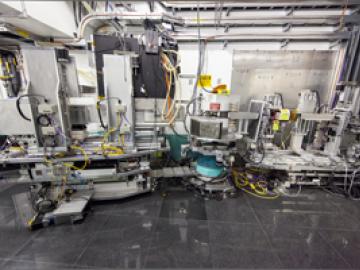Filter News
Area of Research
- (-) Climate and Environmental Systems (6)
- (-) Computational Engineering (4)
- Advanced Manufacturing (16)
- Biological Systems (4)
- Biology and Environment (41)
- Biology and Soft Matter (3)
- Building Technologies (5)
- Chemical and Engineering Materials (2)
- Chemistry and Physics at Interfaces (5)
- Clean Energy (148)
- Computational Biology (2)
- Computational Chemistry (4)
- Computer Science (13)
- Earth Sciences (1)
- Electricity and Smart Grid (1)
- Energy Frontier Research Centers (6)
- Fuel Cycle Science and Technology (1)
- Functional Materials for Energy (8)
- Fusion and Fission (14)
- Fusion Energy (7)
- Geographic Information Science and Technology (1)
- Isotopes (12)
- Materials (101)
- Materials for Computing (25)
- Materials Synthesis from Atoms to Systems (8)
- Materials Under Extremes (5)
- Mathematics (1)
- National Security (12)
- Neutron Data Analysis and Visualization (2)
- Neutron Science (45)
- Nuclear Science and Technology (17)
- Nuclear Systems Technology (1)
- Quantum Condensed Matter (2)
- Quantum information Science (6)
- Renewable Energy (1)
- Sensors and Controls (2)
- Supercomputing (67)
- Transportation Systems (5)
News Type
Media Contacts

A team including researchers from the Department of Energy’s Oak Ridge National Laboratory has developed a digital tool to better monitor a condition known as Barrett’s esophagus, which affects more than 3 million people in the United States.

Researchers at Oak Ridge National Laboratory have identified a statistical relationship between the growth of cities and the spread of paved surfaces like roads and sidewalks. These impervious surfaces impede the flow of water into the ground, affecting the water cycle and, by extension, the climate.

In the vast frozen whiteness of the central Arctic, the Polarstern, a German research vessel, has settled into the ice for a yearlong float.

A detailed study by Oak Ridge National Laboratory estimated how much more—or less—energy United States residents might consume by 2050 relative to predicted shifts in seasonal weather patterns

A study led by Oak Ridge National Laboratory explored the interface between the Department of Veterans Affairs’ healthcare data system and the data itself to detect the likelihood of errors and designed an auto-surveillance tool









